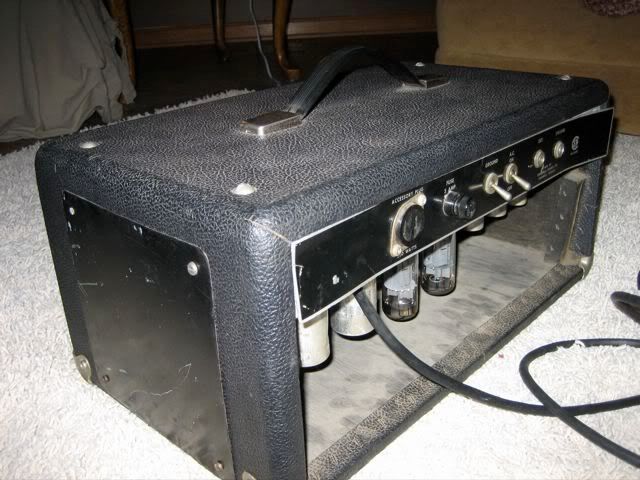6
by scott_Archive
I get my power cables from triode as well, sometimes, though lately I've been more into buying 15' or 20' orange indoor/outdoor 3-prong extension cables, and then cutting the female end off and stripping the wires. It's kinda awesome to not have to worry how close you are to the power outlet. The only thing you need to worry about then is, like BadC said, crimping a ring on, or you can do it the way I do it, which is to strip down the end of the wire, bend it into a U-shape that's just the right size to fit around the bolt you're gonna connect it onto, and then tinning it with solder to make it all nice and rigid and stuff. The big downside from the cables you get from a place like Triode is that they're not super long. I like at least a good 10', if not more.
I forgot to mention what is one of the trickiest parts, or can be the most frustrating sometimes... the power cable enters the chassis through a hole (duh) but it has a plastic cable retainer thingy, just a piece the size of a gumdrop or something that holds the cable in place. If you tug on the power cable, the retainer holds the cable in place at the chassis, so that tugging is not translated onto your solder joints. It would be bad if, say, you pulled on the cable on accident, and then it ripped one of the connections loose inside the chassis. Sparks and fuses and circuit breakers blowing kinda bad.
The trick to those things is, you need to use pliers, like a snub needlenose kind or the like, to squeeze the retainer together while you push it through the hole. Squeezing and pushing it through is the easy part. The tricky part is, once you have the new cable ready to be put in, and you put the retainer on it, and you need to squeeze it and put it back *in*. The cable you put in is going to be thicker than the one you took out, as it has three conductors instead of just two. So it's a tighter fit. It can be a little bit of a pain in the ass, but it just takes a little time and a little getting used to.
I would recommend that you get your new power cable all prepped, with the wires stripped down and tinned and whatnot, and then feed the ends of the cables through the hole, and then put the retainer onto the cable where it will give you the right amount of cable length inside the chassis to get the wires to where you need them, but not a lot more since that'd be messy, and then squeeze the retainer into place. And *then* make your solder connections.
If you have a chance to make the trip up to Chicago before you move up here, some weekend or something, I'd be glad to help you out with it.
Are you sure the amp is in good operating condition right now? Aside from the power cord, which you really ought to do, and the new fan, which you really ought to do, there's the question of at least testing the caps to make sure they're okay, if not outright replacing them, and also making sure the bias voltage is set properly, assuming the output tubes are in good working order.
"The bastards have landed"
www.myspace.com/thechromerobes - now has a couple songs from the new album





